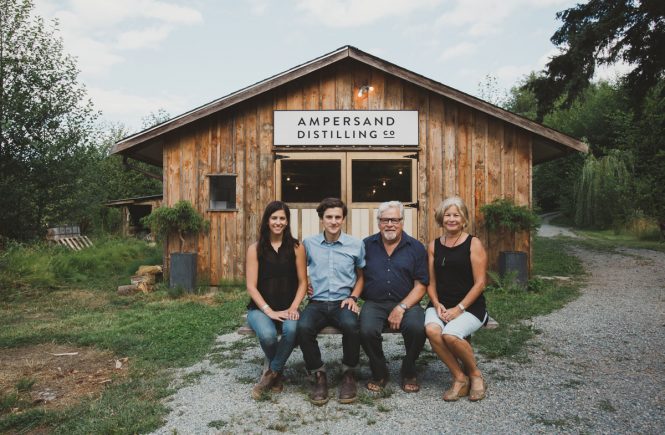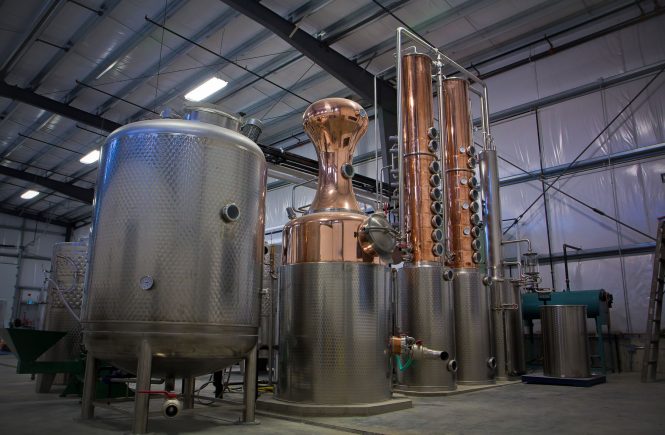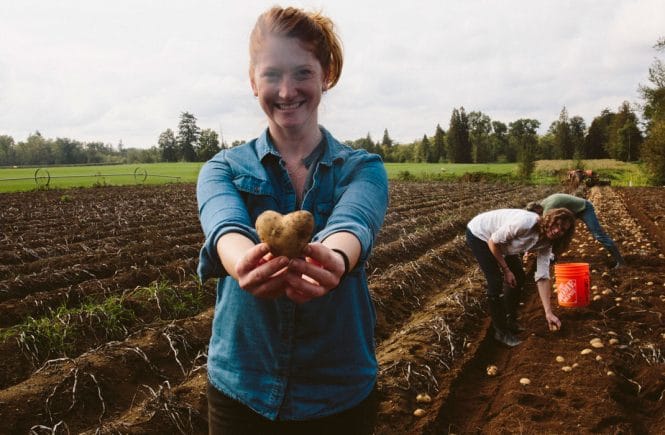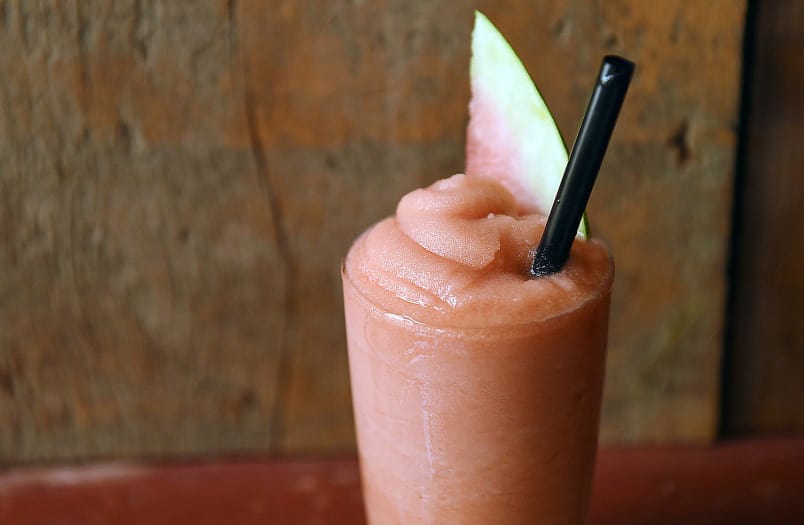
Who hasn’t wasted a hot summer afternoon knocking back frozen margaritas on a sunny patio somewhere? It’s almost a rite of passage. But it isn’t, generally speaking, a quality drinking experience.
Or at least it didn’t used to be.
“We just really like the playful nature of it,” Pape says. “Not to mention that it’s something most people do poorly and we could do better than anyone else.
“The point is always to make something very delicious,” he adds. “We only work with cocktails we would be proud to serve and that fall into the ethos of the restaurant.”
Wildebeest’s new drinks are part of a trend that’s been sweeping the continent for the past couple of years.
We’re not just talking frosé, the pink wine slushy that was the hot drink of summer 2016. It started a few years back in New Orleans, cocktail capital of North America, when bartenders took slushy machines that had churned out sweet frozen daiquiris for decades and filled them with craft cocktails instead. Soon bars everywhere hopped on the trend.
It’s not just nostalgia for guilty pleasures like the Piña Colada. These are classics in a new-old format.
The first frozen drinks were invented around 1950 as something deliciously boozy to do with the new Waring blender. In 1952, the book Electric Blender Recipes by Mabel Stegner included directions for a strawberry daiquiri made with rum, sugar, lime and frozen strawberries. Soon, fruity slushies were everywhere.
In 1971, when a Mexican restaurant in Texas found that its frozen margaritas were so popular the bartenders couldn’t keep up with orders, the owner converted a soft-serve ice-cream machine into the world’s first large-scale margarita maker.
By the 1980s and ’90s, every chain restaurant in North America had a slushy machine and was churning out frozen daiquiris and margaritas. Unfortunately, these drinks were often overly sweet and made with poor-quality, inexpensive spirits, which is what gave slushies their bad reputation.
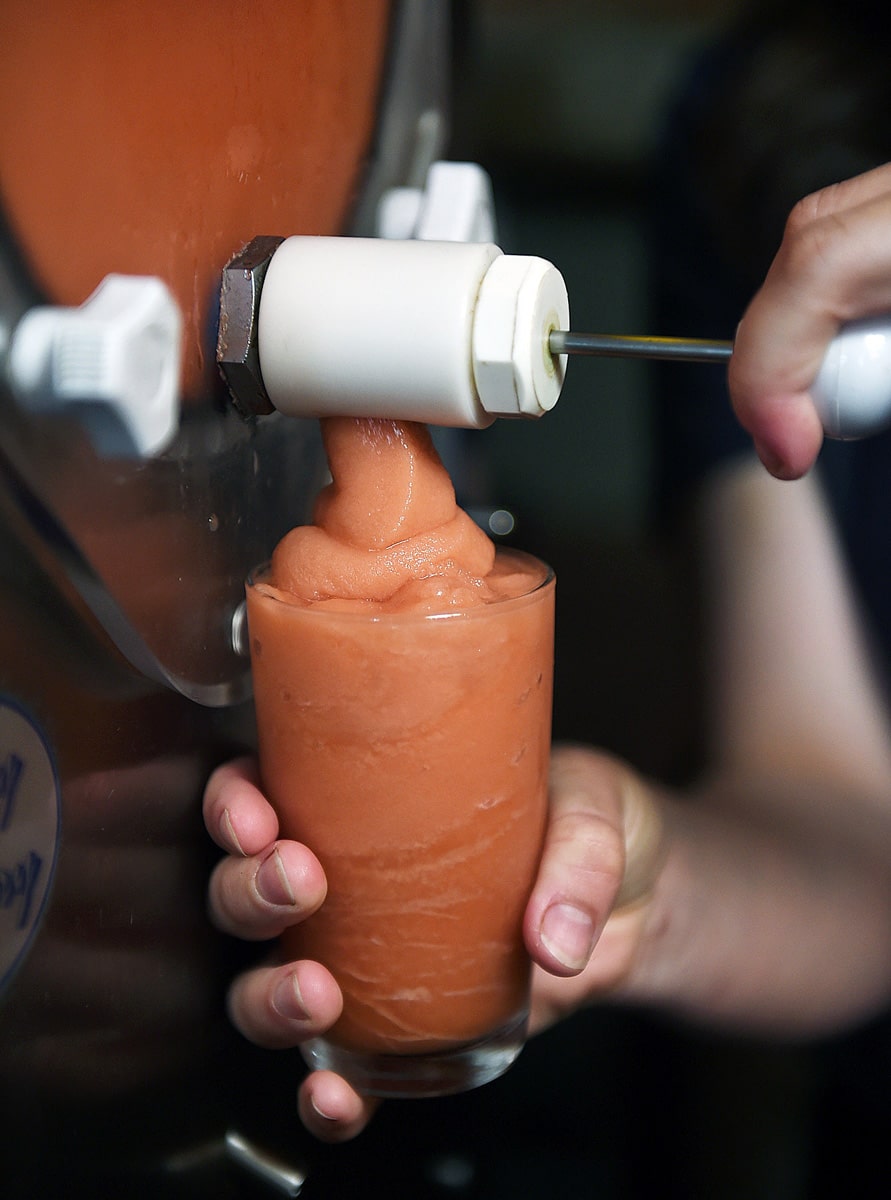
Today, instead of cheap, syrupy drinks, Wildbeeest uses its “Cadillac of slushy machines” to make elegant variations on classics like the Negroni.
“We use the same ingredients we’d use in any of our classic cocktails,” he says. “And we use good booze.”
Pape suggests home bartenders do the same. He has a few other tips, too.
“Any time you’re blending or puréeing anything, it’s best to work with less liquid up front,” he says. “That’s because you will add about a cup of ice per cocktail, which can water it down substantially.”
Also, it’s best to start with crushed ice rather than whole cubes – this will not only speed up the process, but also deliver a more consistent slush.
“The other thing is, I would try to work with a similar structure to any other cocktail,” Pape says. That means the same amount and proportion of spirits and other ingredients.
The best drinks to adapt to a slushy format are the kinds of cocktails that are typically shaken, such as the entire family of sours. The worst are the stirred, spirit-forward ones.
“I wouldn’t do a Manhattan or an Old Fashioned,” Pape says. “Something that was shaken with juice would work best.”
Because frozen drinks need to have a high sugar content to maintain their consistency, he suggests adding a bittering agent, such as tea or bitters, to the drink, then adjusting the tartness level with citrus flavours after it’s been mixed.
Finally, always use quality spirits and fresh juice. “And be diligent about the quality of ice you’re using,” he adds. “You’re using a lot of it, so don’t use old freezer ice.”
—by Joanne Sasvari


